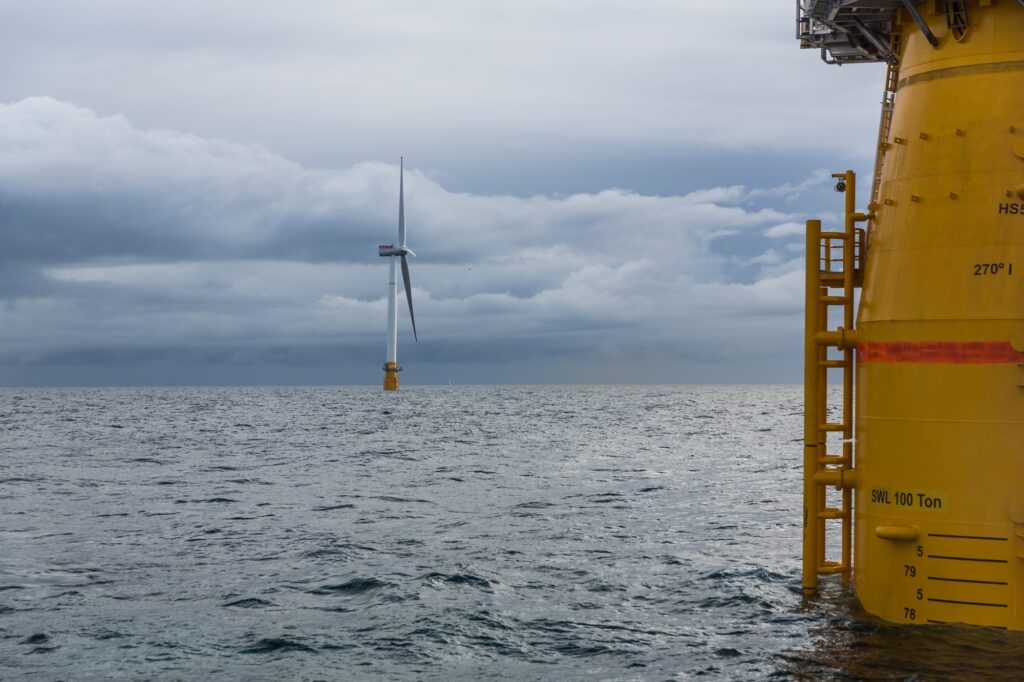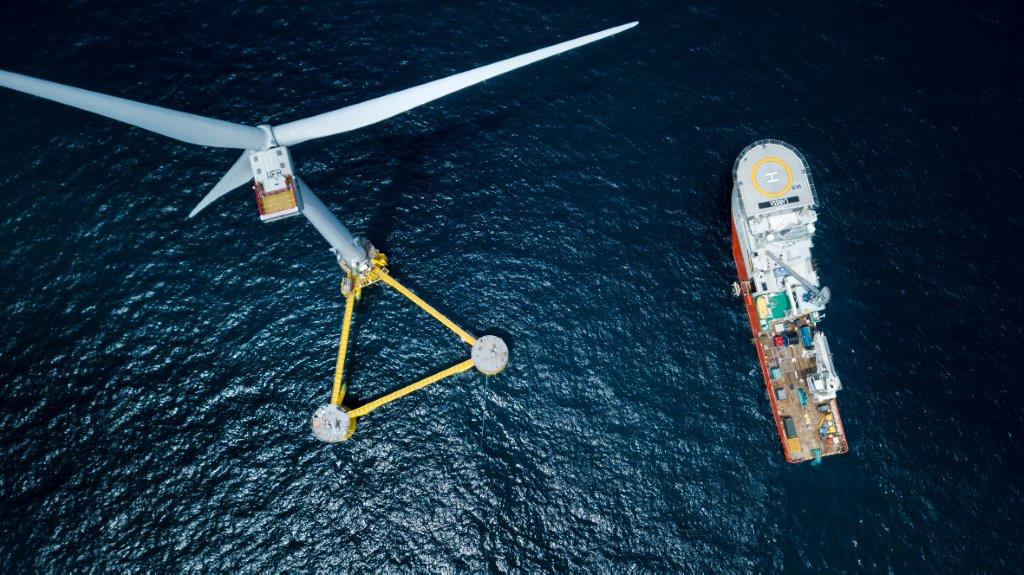By Andrew Stormonth-Darling, Head of Floating Wind at ORE Catapult
We all know that the hype and the giddy excitement surrounding floating wind has somewhat subsided and we collectively are now confronted with the reality of trying to get this burgeoning industry off the ground in a global environment of high material costs, high interest rates and global trade disruptions. On top of this, sector-specific challenges include the need to build confidence in the planned pipeline of deployment, which is compounded by – and partially driven by – the lack of wind turbine providers able or willing to develop the products the sector needs.
There are however real steps being taken and real successes which are worth remembering. Not least of these is the accelerating level of maturity of different technological solutions, giving us an ever-increasing suite of options that become more bankable with every day that these units operate. Recently we saw the official inauguration of the Provence Grande Large project, showcasing the world’s first Tension Leg Platforms (or in this case “tensioned line floats”) a project which has been successfully delivering power to the grid for almost a full year already. Along the coast the Les Eoliennes Flottantes du Golfe du Lion project (EFGL) is in the midst of deploying another set of Principle Power steel semi-submersible out to sea, giving the industry a chance to make some useful comparisons with projects in the North Sea. Both projects have used the same yard at Fos-Sur-Mer, with lead roles for Eiffage Metal and Smulders – demonstrating invaluable repeat business for these companies. Sticking with France, the impressive progression of BW Ideol’s Floatgen design continues, building on over 5 years of impressive performance of the 2MW demonstrator, culminating now in the production of the EolMed project utilising turbines rated around 10MW.
On the more disruptive end of the spectrum, we see concepts such as that of Mingyang which have now developed a colossal 50MW duel-rotor system. Not only is this a major step change in the number of MW per single foundation, but it is the fact that this constitutes a combined floater-turbine product that could be a very attractive prospect to developers currently grappling with system integration challenges. This concept also highlights something fundamental which we haven’t really seen yet in floating wind – a technical offering that could actually offer a major advantage over fixed wind. Something that you likely couldn’t see delivered on a fixed foundation due to the loads it would exert on a static structure. There are of course other well-documented geopolitical concerns being voiced, but the pure technological potential is there for all to see.
Alongside projects in the UK and elsewhere, these projects highlight the global nature of floating wind, and I firmly believe presents an incredible opportunity to collaborate. The single most important thing to strengthen at the moment is the sentiment around the technology, its reliability and its deliverability at a reasonable price point. We need to dispel the myth that floating wind is somehow an unproven technology, and we’ll do this most rapidly by sharing our lessons and our successes as widely as possible. Progress is beginning to emerge on this front, with international cooperation – spearheaded by Japan and the UK – seeking to develop a structure to meet these collaborative ambitions.
Closer to home, the world is looking to the UK for guidance and of particular interest are our stable regulatory and policy frameworks. They are giving developers a stable route to market, now at a price point that should allow the next wave of projects to successfully deploy. Yes the cost of floating wind is high today – 2-3 times that of fixed wind – but by getting the ball rolling with a number of small to medium sized projects now, we allow businesses – including those from the UK – to learn lessons in design, partnerships, procurement and delivery and feed these back into the approach they take to future projects.
On the political front, it is imperative that over the coming years we clearly show the direct benefit of floating wind to the UK voter. Evidencing this already are a range of massive investments that have already been unlocked as a response to the floating wind opportunity. Just look at the Port of Ardesier which is well underway with its planned £400m development – one of the largest construction projects in Europe – creating significant economic activity already in anticipation of the coming pipeline of work. Investments in cable supply – for both the fixed and floating markets – is also one of our strongest export opportunities with JDR Cables investing in the North-East of England and already securing work for a vast number of projects across the world.
Progress is there for us all to see – We could just be better at celebrating these wins, and move on from the previous, perhaps unrealistic expectations that were shared at the height of the ‘ScotWind’ boom. The industry is consolidating such that it’s the serious, meticulous and well-structured teams that remain, and its these that are taking the considered but confident steps forward to deploy their projects successfully.
Floating wind is coming – perhaps a little less intensely than initially expected – and we just need to stick with the programme.
Photo courtesy of Principle Power_DOCK90




